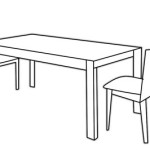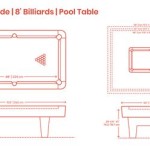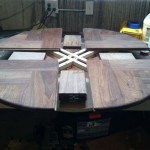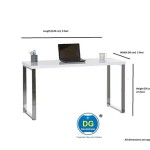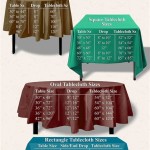Bench Style Dining Table Plans: A Comprehensive Guide
Bench style dining tables have experienced a resurgence in popularity, offering a blend of rustic charm and contemporary functionality. They are well-suited for a variety of spaces, from smaller apartments to larger family homes, and excel in creating a communal and inviting dining experience. Choosing the right bench style dining table plans, however, requires careful consideration of various factors including size, style, material, and construction techniques. This article provides a comprehensive overview of these considerations, guiding readers through the process of selecting and understanding bench style dining table plans that match their specific needs and preferences.
The core element of crafting a successful bench style dining table lies in the integrity of the plans used. Well-defined plans not only outline the dimensions and design but also specify the necessary materials and construction techniques. This ensures a structurally sound and aesthetically pleasing final product. A comprehensive set of plans will typically include a detailed parts list, precise measurements, exploded diagrams showcasing assembly steps, and potentially even alternative design options. Investing time in sourcing and thoroughly reviewing the plans is a crucial step in ensuring the success of the project.
Understanding Bench Style Dining Table Designs
Bench style dining tables are not a one-size-fits-all solution. A diverse range of designs exists, each impacting the overall aesthetic and functionality of the dining area. Some common design considerations include table shape, leg style, bench design, and the incorporation of additional features like storage or extensions.
Table shapes typically fall into rectangular, square, round, or oval categories. Rectangular tables are the most common and generally provide the most seating capacity. Square tables are well-suited for smaller spaces and promote more intimate conversations. Round tables foster a sense of equality among diners, while oval tables offer a blend of the benefits of rectangular and round shapes. The choice of table shape should be dictated by the size and layout of the dining space, as well as the desired ambiance.
Leg styles significantly contribute to the overall aesthetic. Options range from simple, straight legs to more elaborate designs such as trestle legs, hairpin legs, or pedestal bases. Straight legs offer a clean and minimalist look, while trestle legs provide greater stability and a more rustic appearance. Hairpin legs add a mid-century modern touch, and pedestal bases offer a more formal and elegant feel. The structural integrity of the legs is paramount, as they bear the weight of the table and its occupants. The plans should clearly specify the dimensions, angles, and joinery methods for the chosen leg style.
Bench design is another critical element. Benches can be simple, backless slabs of wood or more elaborate designs with backrests, armrests, or upholstered seating. The length of the benches should be carefully considered in relation to the table length, ensuring adequate seating space without overcrowding. The plans should detail the construction methods for the benches, including the type of wood, joinery techniques, and any upholstery requirements. The comfort of the benches is also a key factor, particularly for longer meals. Consider adding cushions or upholstered pads for increased comfort.
Finally, some bench style dining tables incorporate additional features such as built-in storage under the benches or extension leaves for the table. Storage options can be particularly useful in smaller spaces where maximizing functionality is essential. Extension leaves allow the table to be expanded to accommodate larger gatherings. Plans for tables with these features will be more complex and require a higher level of skill to execute successfully.
Material Selection for Longevity and Aesthetics
The choice of materials significantly impacts the durability, aesthetics, and cost of the bench style dining table. Wood is the most common material, offering a wide range of options in terms of species, grain patterns, and colors. Other materials such as metal, concrete, or glass can also be incorporated as accents or structural elements.
Hardwoods such as oak, maple, cherry, and walnut are popular choices for dining tables due to their strength, durability, and attractive grain patterns. Oak is a versatile and readily available option, known for its durability and resistance to wear. Maple is a lighter-colored hardwood with a smooth grain, ideal for contemporary designs. Cherry offers a rich, reddish-brown color that deepens over time, adding a touch of elegance. Walnut is a premium hardwood with a dark, chocolate-brown color and a striking grain pattern. The selection of hardwood should be based on the desired aesthetic, budget, and the expected level of use.
Softwoods such as pine, fir, and cedar are less expensive than hardwoods but are also less durable. They may be suitable for projects where cost is a primary concern or where a rustic, weathered look is desired. However, softwoods are more susceptible to scratches, dents, and water damage. If using softwood, consider applying a durable finish to protect the surface.
Metal can be used for legs, frames, or accents, adding a contemporary or industrial touch. Steel is a common choice for metal legs due to its strength and affordability. Stainless steel offers a more durable and corrosion-resistant option. The plans should specify the gauge of the metal and the appropriate welding or fastening techniques. Powder coating can be applied to metal surfaces to protect them from rust and provide a variety of colors and finishes.
Concrete can be used for tabletops or bases, creating a unique and modern aesthetic. Concrete is extremely durable and resistant to heat and scratches. However, it is also heavy and can be prone to staining. The plans should detail the concrete mix, reinforcement methods, and sealing techniques. Concrete surfaces typically require a sealant to protect them from stains and moisture.
Glass can be used for tabletops, providing a sleek and modern look. Tempered glass is the safest option for dining tables due to its strength and resistance to shattering. The plans should specify the thickness of the glass and the methods for attaching it to the frame or base. Glass tabletops are easy to clean but can be susceptible to scratches and fingerprints.
The selection of materials should be carefully considered in relation to the overall design, budget, and desired level of durability. The plans should clearly specify the type, dimensions, and quantity of each material required for the project.
Interpreting and Utilizing Bench Style Dining Table Plans
Effectively interpreting and utilizing bench style dining table plans is crucial for achieving a successful outcome. This involves understanding the various components of the plans, following the instructions carefully, and employing appropriate construction techniques. Familiarity with woodworking tools and techniques is essential for executing the plans accurately and safely.
A typical set of plans will include a detailed parts list, specifying the quantity, dimensions, and material of each component. This list serves as a shopping list for purchasing the necessary materials. Double-checking the parts list against the plans is crucial to ensure that all required components are accounted for.
The plans will also include detailed diagrams and measurements for each component. These diagrams illustrate the shape, size, and joinery methods for each part. Accurate measurements are critical for ensuring that the components fit together properly. Using a precise measuring tool and double-checking all measurements is essential.
Exploded diagrams show how the various components fit together, providing a step-by-step guide to the assembly process. These diagrams should be studied carefully to understand the sequence of assembly. Following the instructions in the correct order is crucial for avoiding errors and ensuring structural integrity.
The plans should also specify the appropriate joinery methods for connecting the various components. Common joinery methods include mortise and tenon joints, dovetail joints, dowel joints, and screw joints. The choice of joinery method depends on the strength requirements, aesthetic preferences, and skill level of the builder. The plans should provide clear instructions on how to execute each joinery method.
A crucial aspect of utilizing bench style dining table plans involves ensuring the accuracy of cuts and joinery. Mistakes in these areas can compromise the structural integrity and aesthetic appeal of the finished product. Utilizing clamps to secure pieces during gluing and screwing is also important for ensuring tight and even joints.
Finally, understanding the finishing process is crucial for protecting and enhancing the beauty of the wood. The plans may provide recommendations for appropriate finishes, such as varnish, lacquer, or oil. Applying multiple coats of finish and allowing each coat to dry completely is essential for achieving a durable and attractive finish.
Successfully interpreting and utilizing bench style dining table plans requires attention to detail, patience, and a willingness to learn. By carefully studying the plans, following the instructions accurately, and employing appropriate construction techniques, a beautiful and functional bench style dining table can be created.

Diy Farmhouse Bench Love Grows Wild

Diy 40 Bench For The Dining Table Shanty 2 Chic

Woodsmith Rustic Dining Table Bench Plans Woods

Diy Farmhouse Bench Love Grows Wild

Step By Diy Dining Bench Plans Wannabe Clutter Free Farmhouse Table

Diy Benches For My Dining Table Shanty 2 Chic

Super Simple Diy Dining Bench With Turned Legs

Diy Dining Bench With Free Plans The Duvall Homestead

How To Build A Farmhouse Table

Diy Farmhouse Benches




